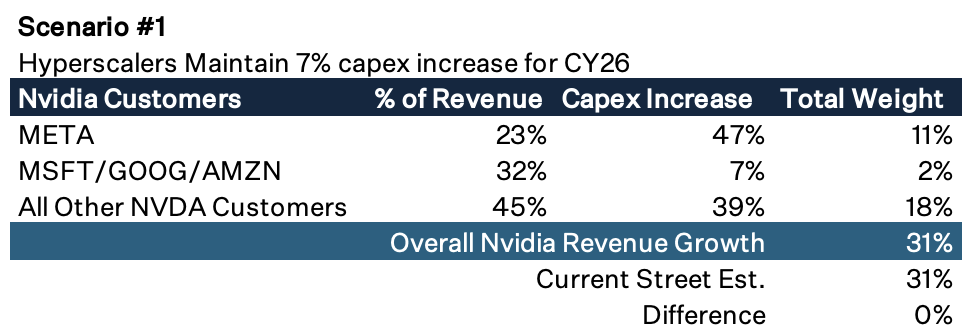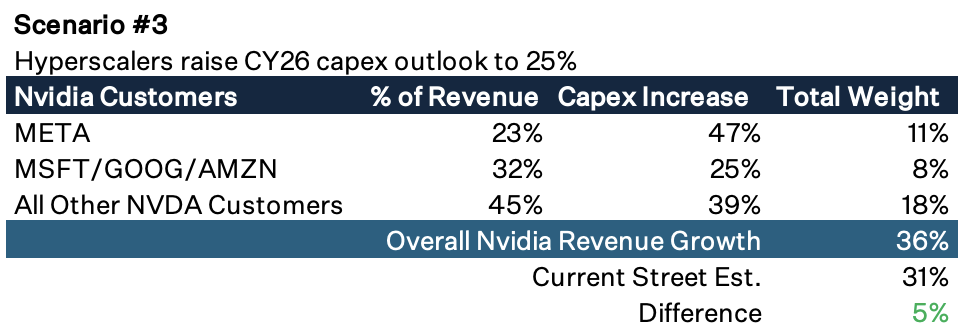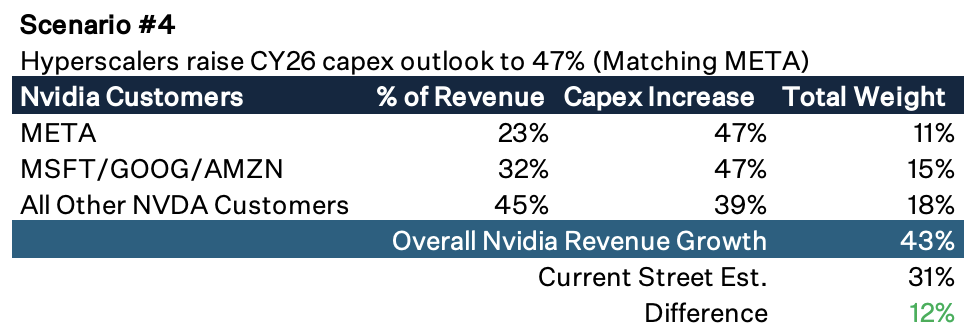Post-Earnings Stock Reaction and Drivers
Nvidia’s October guide appeared light versus the whisper, but adjusting for China shows it was actually higher.
The October guide called for $54B in revenue, plus or minus 2%. That compared to the $55B whisper expectation but was above the Street’s published estimate of $53.4B. In the near term, the whisper carried more weight, which pressured the stock.
I believe about half of Nvidia’s post-earnings sell-off was due to disappointment around the October guide. At first glance, the guide was 2% below the whisper. Adjusting for noise around China, however, the guide would have been between 2% and 7% higher than the whisper.
The $54B guidance did not factor in any contribution from China. In mid July, when Nvidia was cleared to sell the H20 in China, the Street was looking for $51.5B in sales for October. Following that announcement and hyperscaler results, estimates increased by $2B, some of which was tied to China.
On the call, management said China could contribute between $2B and $5B if licensing comes through as expected. At the high end, this would bring revenue to $59B, or 7% above the $55B whisper that already included China.




